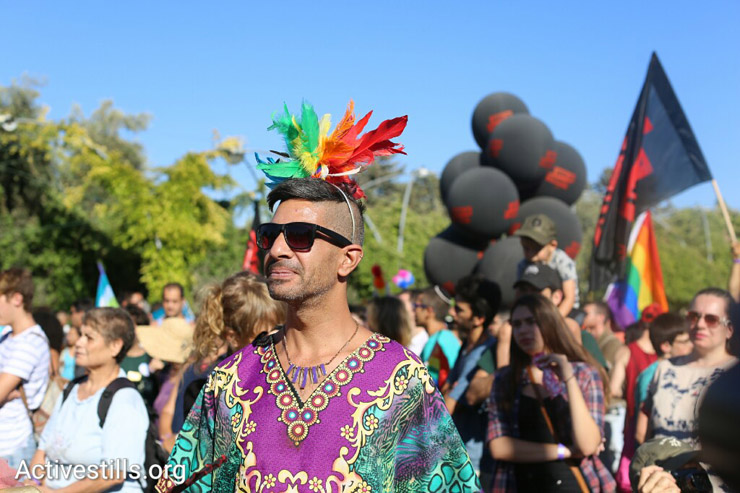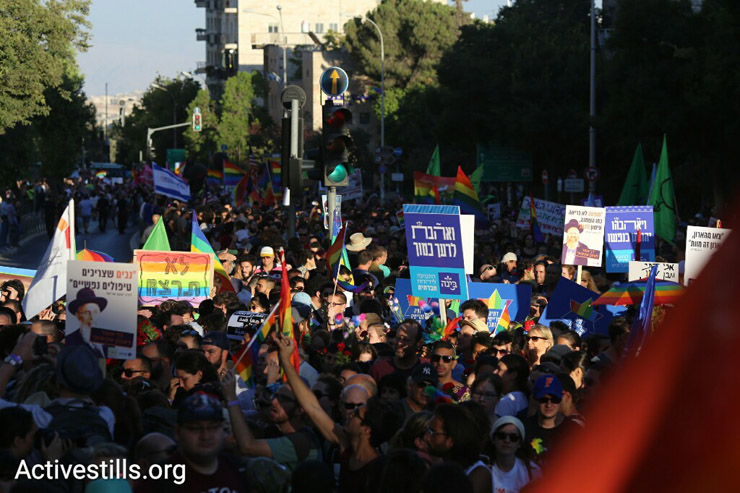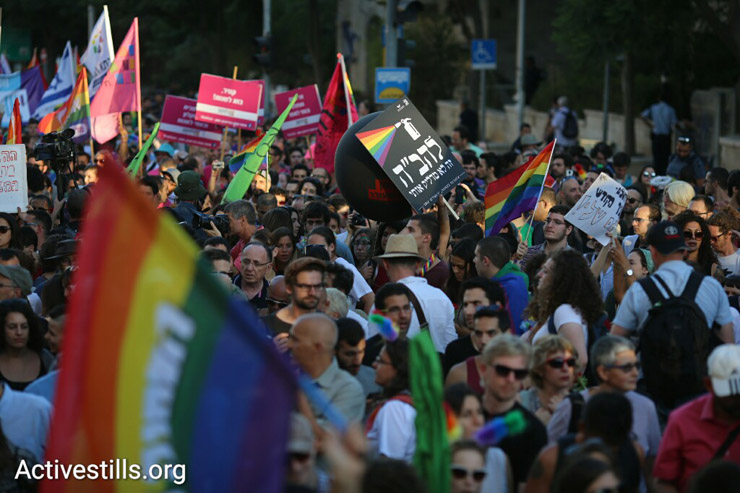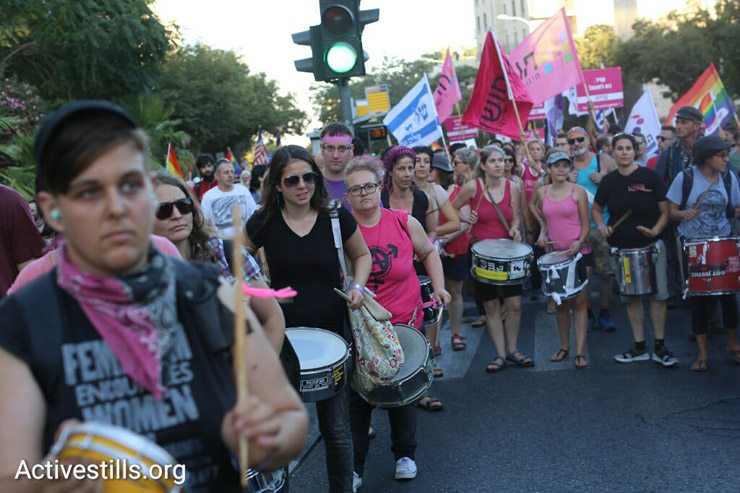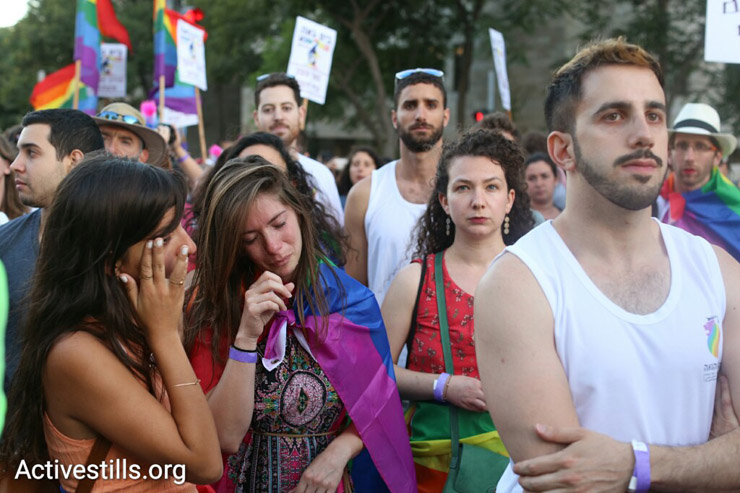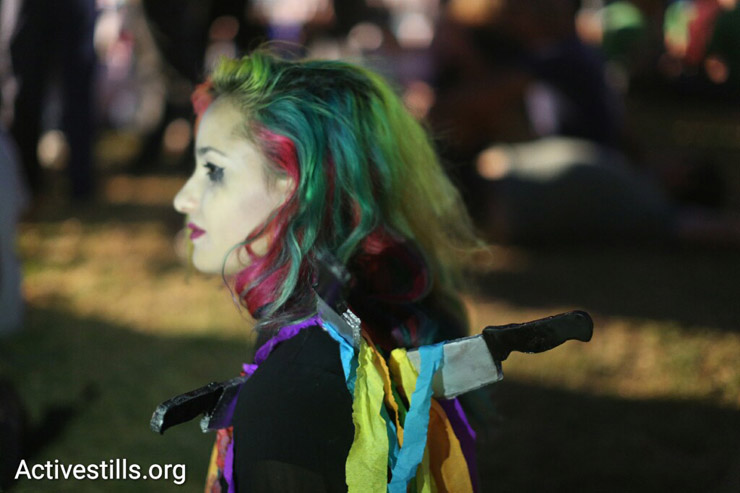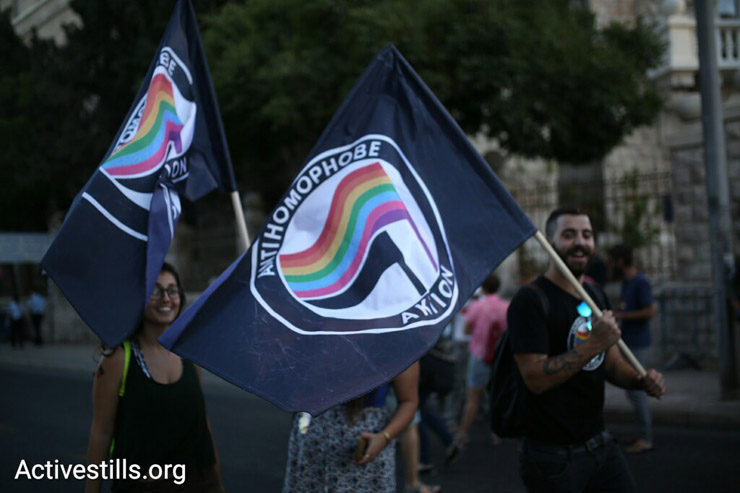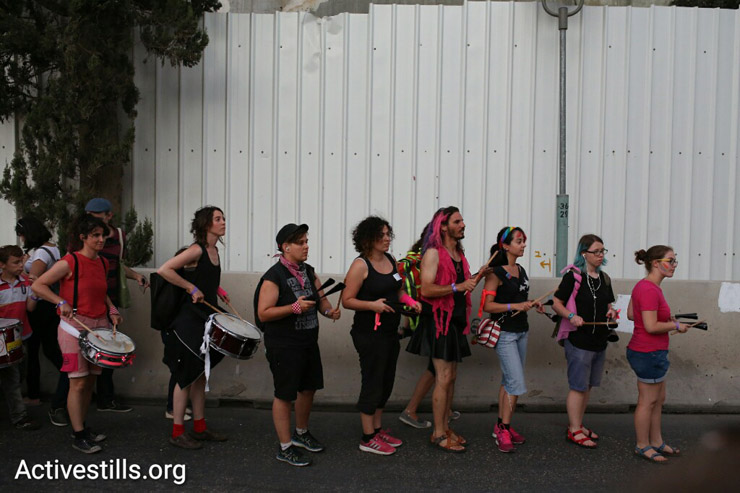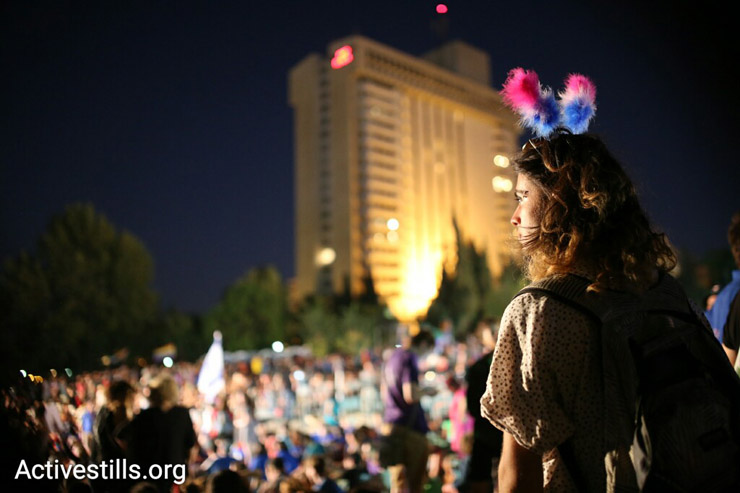Massive, unexpected turnout sent a powerful message in the wake of anti-LGBTQ hate speech in recent weeks. Yet the sterile police cordon in which the Pride Parade was forced to take place also served as an eerie reminder of its insecurity.
[Photo gallery follows the text.]
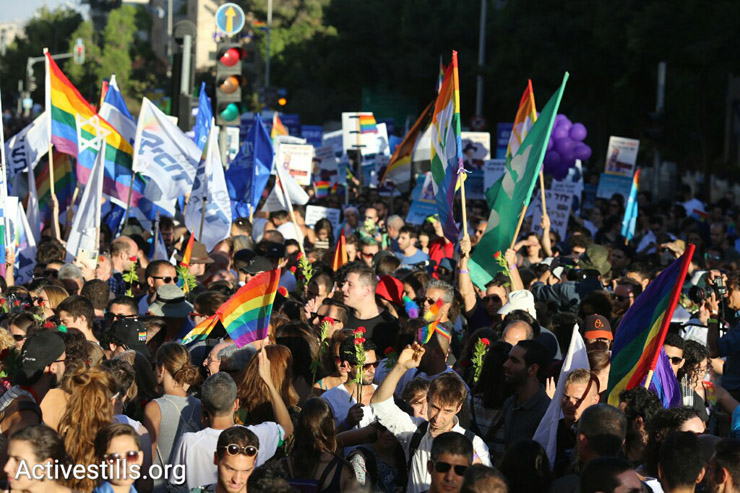
More than 25,000 Israelis turned out to march in Jerusalem’s 15th annual Pride Parade Tuesday evening, the largest turnout ever in the city’s history, coming a year after 16-year-old Shira Banki was stabbed to death in a hate crime targeting the march.
The massive turnout was uplifting and sent a powerful message in the wake of anti-LGBTQ hate speech by prominent rabbis in recent weeks, the refusal of Jerusalem’s mayor to attend the parade, and the cancelation of a smaller pride march in the southern city of Be’er Sheva a week earlier.
The huge number of security forces was impossible to ignore, however. Following the police’s tragic failure the previous year, and in response to alleged threats to attack this year’s parade, police set stringent entry requirements — namely, that all participants had to pass through a single entrance.
Thousands more than anyone expected showed up, leading to long lines at undermanned security checkpoints.
Once on the march route, participants passed by the exact location where Banki was murdered by ultra-Orthodox man Yishai Shlissel, who carried out a similar stabbing attack 10 years earlier and who was accused of attempting to orchestrate a third attack this year from behind bars. Participants placed flowers next to a giant photograph of 16-year-old Banki.
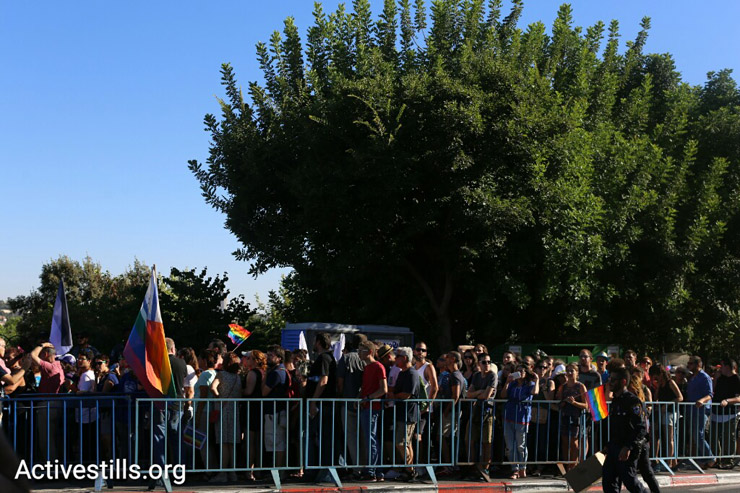
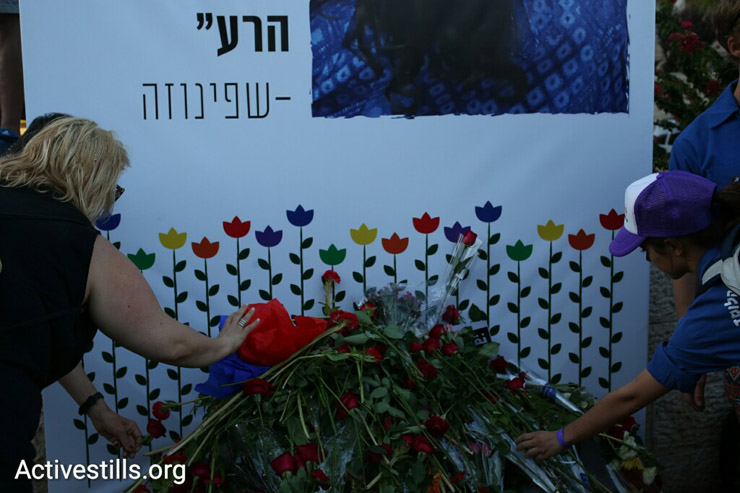
The security was so tight that no counter protesters were within sight, particularly, members of the racist Jewish purity group Lehava, which in the days leading up to the march distributed fliers offering gay conversion therapy. They were apparently cordoned off somewhere far away.
In fact, the streets were totally cleared of anyone but the marchers and policemen. The only passersby were people trying to join the march. It felt bizarre, like we were marching alone, among ourselves. It felt like all of downtown West Jerusalem was on lockdown.
And while the security appeared to dominate the scene, the record turnout brought with it an uplifting and bold declaration that Israel’s queer communities are here to stay.
Jerusalem Mayor Nir Barkat’s announcement a day earlier that he would not join the march (he never has) because, as he told Yedioth Ahronoth, “I don’t want to be part of the harm to the ultra-Orthodox public and the Religious-Zionist public,” was the worst possible thing he could have said, suggesting a total disregard for the importance of taking a stand with the victims of discrimination and intolerance. It made going to the march all the more critical.
The march was act of taking a stand for diversity and tolerance, but it was also a clear reminder that an army of heavily armed policemen is still necessary for a peaceful LGBTQ parade to take place in the city.
Pride parades usually serve to declare the loud-and-proud presence of LGBTQ community in the hearts of cities. This year’s march felt more like a sober assertion of the very existence of those groups, and the need for acceptance and respect for the Other — something that sorely lacking in Israeli society.
